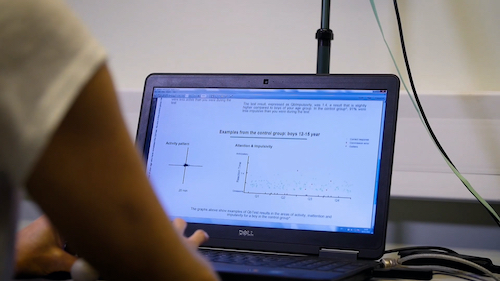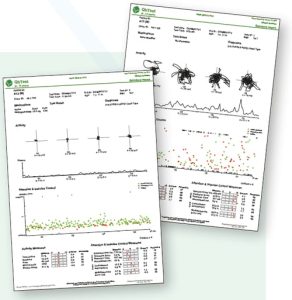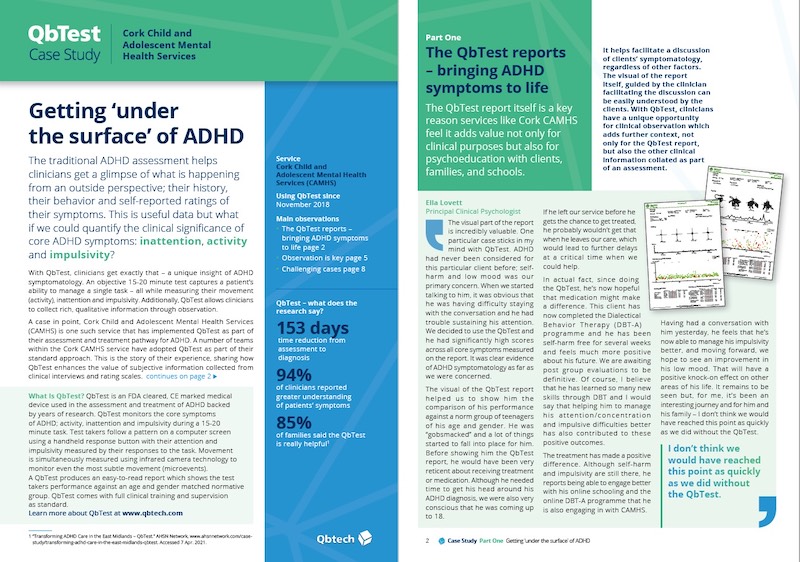The reality: using QbTest reports in clinical practice

Clinical judgment is a core skill honed by experienced clinicians providing ADHD assessment and treatment. While clinical judgment is essential, based on feedback from subjective data (rating scales, interviews), many leading healthcare teams are adding objective data to enhance their understanding of patients’ symptoms. Cork Child and Adolescent Mental Health Services (CAMHS) is one practice who have evolved their ADHD care pathway to incorporate objective data for ADHD assessment and treatment.
The QbTest reports bring ADHD symptoms to life
The QbTest report itself is a key reason services like Cork CAMHS feel it adds value not only for clinical purposes but also for psychoeducation with clients, families, and schools. It helps facilitate a discussion of clients’ symptomatology, regardless of other factors.
The visual of the report itself, guided by the clinician facilitating the discussion can be easily understood by the clients. With QbTest, clinicians have a unique opportunity for clinical observation which adds further context, not only for the QbTest report, but also the other clinical information collated as part of an assessment.
Ella Lovett, Principal Clinical Psychologist 
“The visual part of the report is incredibly valuable. One particular case sticks in my mind with QbTest. ADHD had never been considered for this particular client before; self harm and low mood was our primary concern. When we started talking to him, it was obvious that he was having…”

